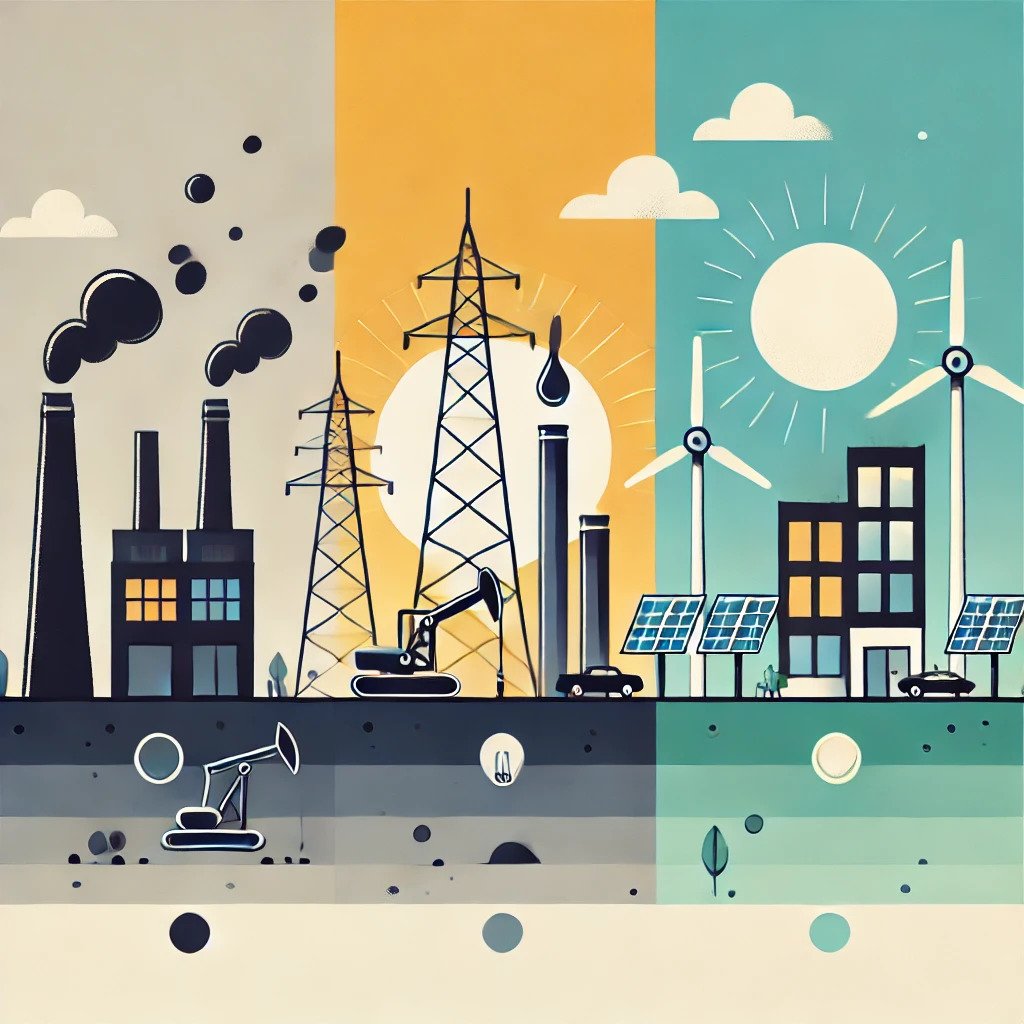We don’t have a Climate Crisis. We have an Energy Crisis.
Solving it creates a path to economic, energy, and environmental independence
In our quest for prosperity, we face a critical challenge: The Energy Crisis. This crisis is about our fundamental need for abundant, affordable, and renewable energy to power progress for 8 billion humans. The good news? We have the solutions at hand to create a future of economic growth and energy security. And there’s another benefit. Solving The Energy Crisis also addresses our most pressing environmental concerns.
Economic Independence: Affordable Abundance
In business, we generally seek the highest value at the lowest cost. As it relates to our energy needs, we’ve now relied on coal, oil, and natural gas for decades. But times have changed. Oil and gas are increasingly expensive compared to alternatives and they’re non-renewable: they will be largely depleted by 2060.
For the past decade, solar and wind have seen dramatic cost reductions and are now consistently the cheapest sources of energy. Their cost advantages continue to grow, and we’re seeing the possibility of even more renewable energy sources, such as geothermal, becoming economically competitive. Of critical importance, these renewable resources will last for millions of years, providing a lower cost, lower risk foundation for generations to come.
This transition creates entirely new economic opportunities. Farmers who once only harvested crops can now harvest energy on a portion of their land, bringing financial benefits to them and their communities. While places such as the Permian Basin represent today's energy superstars, initiatives like the Heartland Energy Hub showcase how different regions are poised to become powerhouses of the new energy economy.
Energy Independence: Expanding Our Freedoms
A renewable-energy grid isn't just about solving a crisis - it's also about seizing an unprecedented opportunity to build a more secure and self-reliant energy system. By diversifying our energy sources and reducing dependence on finite non-renewable fuels, we enhance our national security and energy independence.
Renewable energy can be produced locally, reducing reliance on energy imports and volatile global markets. This transition empowers communities to generate their own power or work with others to share power - creating a more distributed and resilient energy network that’s less vulnerable to potential disruptions.
Furthermore, as energy storage technologies continue to advance, we're moving towards a future where intermittency issues are resolved and clean energy provides reliable power 24/7/365. For more than a decade, we’ve positioned natural gas as a bridge in the transition from non-renewable to renewable energy. It’s time to cross the bridge! Being on the other side frees us from non-renewable energy systems and gives us greater flexibility and freedom in how we power our lives.
Environmental Independence: Thriving with Nature
Many of us have fallen in love with the big skies of Montana, the amber waves of grain across the Corn Belt, the endless horizons of the Great Plains, the remote streams of Alaska, and the majestic peaks of the Rockies. We gain strength and meaning from the natural world around us, and we want these ideals to endure. Solving the Energy Crisis gives us the Environmental Independence to live in a world where our energy sources don't pollute our air and water and don’t impact the environment in ways that destroy our lifestyles. By transitioning to renewable energy sources, we can make our communities – and other communities around the world – healthier, happier, and wealthier.
A renewable energy grid leads to cleaner air, cleaner water, and a more stable environment. This isn't just about avoiding negative impacts; it's about creating positive change. Imagine small and large cities where we breathe clean air, where our waterways are free from energy-related pollutants, and where our ecosystems can thrive alongside our technological progress and economic growth.
This environmental independence allows more people to thrive. By reducing the human costs associated with pollution-related illnesses, it alleviates the suffering of many and enhances our overall quality of life. Moreover, it ensures future generations inherit a planet capable of supporting their dreams and aspirations.
Solving the Energy Crisis: A Future of Independence and Prosperity
The path to a renewable energy grid leads us to a future where economic, energy, and environmental independence are achievable and interconnected. By embracing innovative renewable energy solutions, we will build a world that's more prosperous and sustainable.
This transition represents one of the greatest opportunities of our time – a chance to reimagine our relationship with energy and the environment while driving technological innovation. As we move forward, let's focus on the immense potential of this energy revolution to create a brighter, more prosperous future for everyone.



